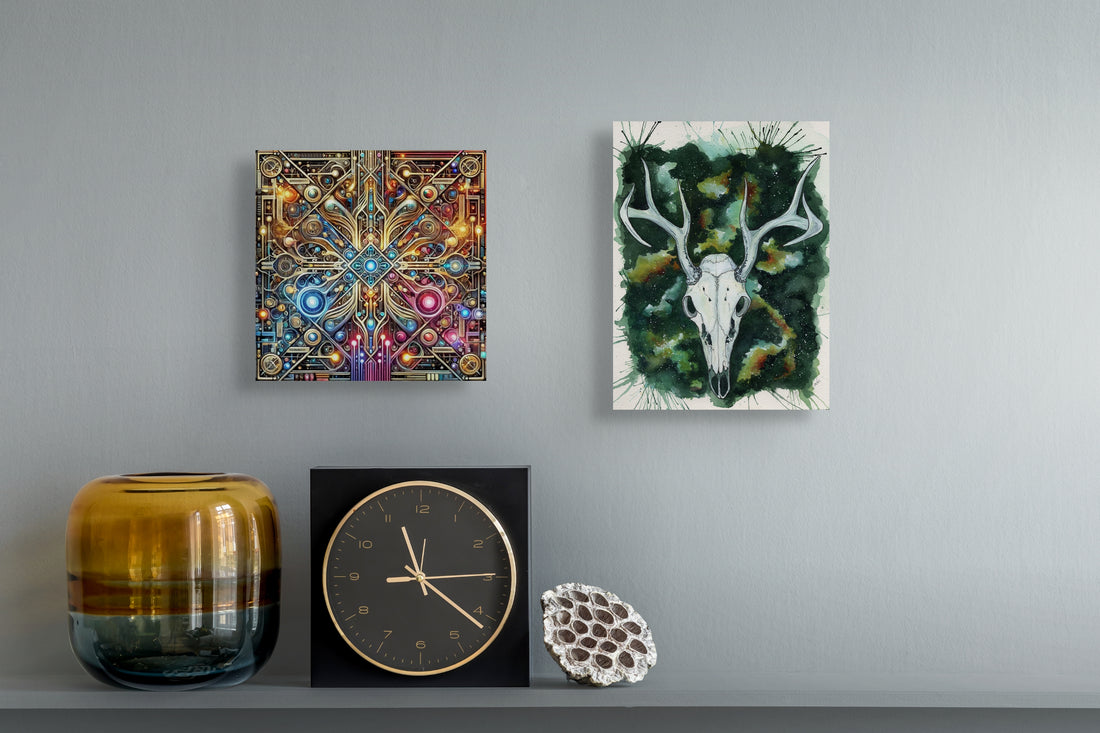
The Timeless Value of Traditional Art in the Age of AI
Share
Preserving the Essence of Traditional Art in the Age of AI
As we navigate the ever-evolving landscape of the art world, we find ourselves at a fascinating crossroads. On one side, we have the rich, tactile traditions of non-digital art forms like watercolor painting, and on the other, the burgeoning realm of AI-generated art. Today, I want to delve into the importance of preserving traditional methods in art, and why traditional media still holds a crucial place in our creative expressions.
The Timeless Charm of Traditional Art
There’s something undeniably magical about traditional art forms. The texture of the paper, the flow of the paintbrush, and the gradual build-up of layers all contribute to a deeply personal and tactile experience. Each stroke of watercolor is a testament to the artist's skill, patience, and vision. The human touch imbues each piece with a unique soul that resonates with viewers on a profound level.
The Rise of AI in the Art World
Artificial Intelligence has made significant strides in recent years, transforming various industries, including art. AI-generated art can produce stunningly intricate designs and mimic styles of renowned artists with impressive accuracy. It's a tool that offers new possibilities and pushes the boundaries of creativity.
However, AI art lacks one essential element: the human touch. While AI can analyze and replicate techniques, it cannot capture the emotional depth, intent, and personal journey that traditional artists bring to their work. The essence of art lies not just in the final piece but in the process, the mistakes, and the triumphs along the way.
The Importance of Traditional Media
Connection to Heritage: Traditional art methods link us to our cultural heritage. They are a continuation of practices passed down through generations, each carrying the legacy of those who came before us. By maintaining these methods, we honor our artistic ancestors and keep their spirit alive.
Tactile Experience: Engaging with physical materials like paper, canvas, and paint provides a sensory experience that digital art cannot replicate. The feel of a brush in your hand, the texture of watercolor paper, and the smell of the pigments all contribute to a holistic creative process.
Unique Expression: Traditional media allows for imperfections and happy accidents that often lead to unexpected beauty. These unique qualities make each piece of art one-of-a-kind, reflecting the artist's individual journey and personal expression.
Mindfulness and Presence: Creating art with traditional methods requires a level of mindfulness and presence that can be incredibly therapeutic. The process of mixing colors, applying brushstrokes, and watching the paint flow encourages a meditative state, fostering mental well-being.
Embracing the Future While Honoring the Past
While AI art is an exciting development, it is essential to strike a balance. We can embrace the technological advancements that AI offers while still cherishing and preserving traditional art forms. Incorporating AI as a tool in the artistic process can open new avenues for creativity without losing the essence of what makes art deeply human.
As artists and art enthusiasts, it is our responsibility to ensure that the traditional methods remain alive and vibrant. By continuing to create, teach, and celebrate traditional art, we can preserve its timeless beauty for future generations.
